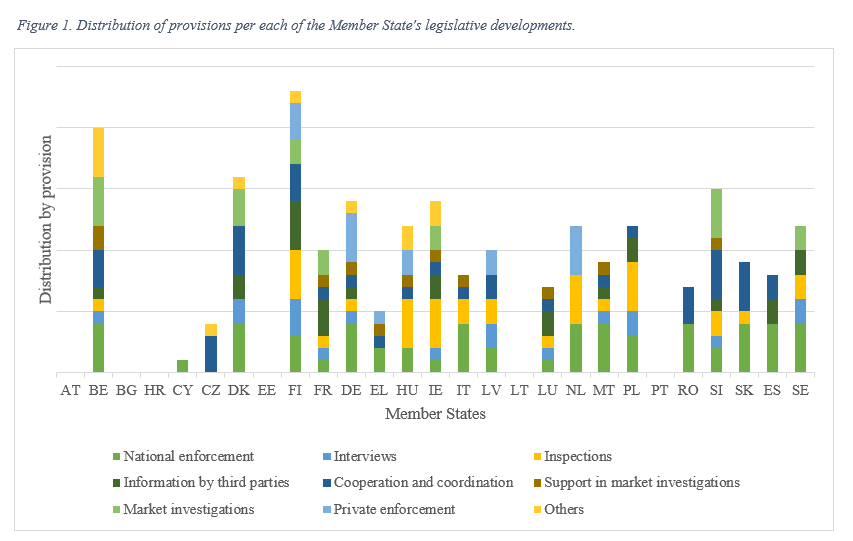Women’s Representation in the Legal Industry | J.S. Held
[authors: Sarah Zhu, Joanne Johnson, and Sherry Zhang]
In honor of retired Justice Sandra Day O’Connor, the first woman to serve on the U.S. Supreme Court, who died in December 2023, this article examines women’s representation in the legal industry and in patent law.
While an increasing number of women earn law degrees, women continue to be underrepresented as practicing attorneys and in leadership positions.
At the highest level of the profession, less than 20% of arguments made by attorneys before the Supreme Court in recent years have been delivered by women. However, it appears that within the Office of the Solicitor General, women are presented with more opportunities to argue before the Supreme Court compared to those from other organizations.
While there is still room for improvement in the Solicitor General’s Office, an examination of its policies and culture may offer guidance to other employers in the legal profession that desire to achieve greater gender parity.
But first, we examine the gains women have made in legal education. Undoubtedly, the landscape of legal education has seen a notable shift in recent years, with increasing numbers of women enrolling in law school.
In 1981, the year Justice O’Connor first served on the Supreme Court, women accounted for 36% of the total number of students enrolled in J.D. programs, despite accounting for almost 52% of the U.S. population.
However, the percentage of women enrollees increased over time, and by 2016, women’s representation reached a significant milestone as the number of women enrolled surpassed the number of their male counterparts.[3]
That trend has continued every year through 2022, with women accounting for about 56% of the total students — approximately 116,000 — enrolled in J.D. programs in 2022.
Indeed, the dramatic increase in women’s enrollment has reversed the historical gender gap, with men now being underrepresented in law programs.
In the figure below, we summarize law school enrollment for men and women over the past 30 years, illustrating the growing representation of women in law schools.[5]
Figure 1: Law School Enrollment by Gender, 1980 — 2022
Furthermore, women’s law school enrollment has increased at the most prestigious programs in the nation. Enjuris reported that, in 2022, 16 of the top 20 law schools, as ranked by U.S. News & World Report, had more female students than male students.
This is a marked improvement in women’s acceptance into top programs, given that in 2016, the first year in which women surpassed male enrollees nationwide, only four of the top 20 law schools enrolled more female students than male students.
This trend indicates that, within the last decade, law schools have made great strides in providing women access to the same caliber of education as their male counterparts.
However, despite the increased representation in law school programs, women continue to be underrepresented in the legal profession. In 1981, it was estimated that out of the 550,000 lawyers in the U.S., 60,000, or 11%, were women.
The U.S. Census Bureau reported that in 2018, there were approximately 400,000 female lawyers in the field, making up just over one in three, or 38%, of all lawyers,[8] despite accounting for 49.6% of the U.S population and 47% of the U.S. workforce.[10]
A later survey conducted in 2022 by the American Bar Association found the percentage of active female attorneys in the U.S. to still be 38% of all attorneys.
The gender imbalance is even greater in higher positions. In 2022, though women represented 49.4% of law firm associates, only about 26.7% of partners and 22.6% of equity partners were women, according to a report from the National Association of Law Placement Inc.
Certain fields within the legal profession have even greater gender disparity, such as in the field of patent law. In the American Intellectual Property Law Association’s 2023 Report of the Economic Survey, of the 706 IP attorneys and associated patent agents surveyed, only 28.5% of the respondents were women.[13]
In addition, the gap in representation seen at the partner level is even wider in the field of patent law, with the same report finding that only 17.5% of equity partners at private firms were women.[14]
Women also continue to be underrepresented in higher-profile assignments within the legal profession. A study in the September 2022 edition of the North Carolina Law Review noted that from 2010 through 2019, 12.6% of patent arguments before the Federal Circuit, and 16.6% of all arguments — i.e., not just patent cases — before the Supreme Court, have been presented by women.[15]
Dishearteningly, women’s representation before the Supreme Court trended downward during this period, with women presenting arguments approximately 20% of the time from 2014 through 2016, but only 14% of the time from 2017 through 2019.[16]
However, this study also found that women are better represented in the U.S. Court of Appeals for the Federal Circuit and the Supreme Court when working for the federal government than in private practice.
At the Federal Circuit level, when considering only private-sector lawyers, between 2010 and 2019, women comprised only 8.9% of oral arguments in patent cases. In contrast, when considering only government lawyers, women presented 48.4% of oral arguments for patent cases on behalf of the government at this level. We note that the government lawyers who argue patent cases at the Federal Circuit level are mainly from the Solicitor’s Office.[17]
As discussed, at the Supreme Court level, arguments in all types of cases are overwhelmingly presented by men, as women only presented oral arguments 16.6% of the time in all Supreme Court cases from 2010 to 2019 — in 293 out of 1,765 cases.
However, the few women who do argue at the Supreme Court disproportionately do so on behalf of the government. Of the total arguments made by women, 48.8% — 143 out of 293 cases — were presented by women from the Office of the Solicitor General.[18]
It is worth acknowledging that the Solicitor General’s Office still has not achieved parity between female and male representation, as approximately only a quarter of the office’s arguments before the Supreme Court were made by women.
But again, the Solicitor General’s Office is outperforming its private-sector counterparts. Indeed, in comparison, only 12.3% of nongovernment lawyers arguing Supreme Court cases between 2010 and 2019 were women, according to the North Carolina Law Review article.
This suggests that while underrepresentation of women is still prominent at this level of the profession, women in the Solicitor General’s Office are provided with relatively more opportunities to present to the Federal Circuit and the Supreme Court compared to other organizations.
This brings us to examine what is unique about the Office of the Solicitor General that may account for better female representation than observed industrywide. The study from the North Carolina Law Review points to a few reasons why this may be the case.
First, the nature of work in the Solicitor General’s Office is credited for contributing to better gender equality. It is a commonly held belief that government positions can offer better work-life flexibility compared to the private sector.[19] This can make a government position more attractive to female attorneys, as women continue to be disproportionately responsible for dependent care and domestic work.[20]
Furthermore, positions with the Solicitor General’s Office are viewed as being prestigious and highly desirable for litigators, resulting in high-quality candidates of all genders applying for positions. Coupled with the workplace flexibility, the Solicitor General’s Office can attract highly qualified female attorney candidates.
Second, the study credits the culture of the workplace for contributing to better gender representation. At the Solicitor General’s Office, argument opportunities generally go to the attorney who writes the brief. This is in contrast to private law firms, where, as the study notes, “argument opportunities tend to go to the most senior, experienced, and predominantly male partners, regardless” of brief authorship.[21]
As a result, the demographics of the lawyers from the Solicitor General’s Office who present arguments at the Federal Circuit are more representative of the demographics of the office as a whole, whereas at a private-sector law firm — because argument opportunities are usually not based on brief authorship — senior male lawyers are sent to argue at Federal Circuit more frequently than women, despite having roughly equal numbers of men and women overall.
While we acknowledge that the Solicitor General’s Office has been criticized for failing to achieve equal representation and diversity, we also consider that there have been more concerted efforts by veterans of the office to recruit and hire more women.
Traditionally, access to prestigious positions such as those in the office was, for all practical purposes, limited to candidates from certain networks or academic affiliations, making it difficult for attorneys outside of those networks to even be considered in the hiring process.
According to a Washington Post article, former acting Solicitor General Neal Katyal, who served in the office in 2011, “said he worked hard to persuade more women,” as well as lawyers of color, “to apply while he led the office, speaking with Supreme Court justices, judges, law professors, leaders of Supreme Court practices at law firms and Justice Department officials to identify potential recruits,” and, in turn, was successful in hiring more women.[23]
Donald Verrilli, who served as solicitor general from 2011 to 2016, also successfully hired more women, including Elizabeth Prelogar, the current solicitor general, and Rachel Kovner, a federal judge in the U.S. District Court for the Eastern District of New York.[24]
According to the same Washington Post piece, Drew S. Days III, who served as solicitor general under President Bill Clinton, similarly hired “lawyers from a broader range of backgrounds,” including “considering more applicants who hadn’t clerked for Supreme Court justices as well as public interest lawyers.”[25]
By offering work-life flexibility, awarding argument opportunities to the attorneys who do the underlying work, and recruiting and hiring attorneys from a broader range of backgrounds, the Solicitor General’s Office serves as a case study of how office culture and workplace policies can help foster greater gender equality at the highest level of the legal profession.
In conclusion, while women are entering the legal industry at higher rates, with balanced representation in even the most prestigious law schools, these gains have not yet translated into equal career prospects. Particularly, between 2018 and 2022, the statistics indicate that the representation of female attorneys has stagnated, and women continue to be underrepresented in the upper echelons of the profession, especially at the Supreme Court level.
However, given that women arguing cases on behalf of the government are better represented than their private-sector counterparts, organizations may look to the culture, policies, and intentional hiring practices of the Solicitor General’s Office as an example of how they may improve women’s representation.
First-Year-Enrollment/Total Enrollment/Degrees Awarded 1963-2013 Dataset. American Bar Association; Statistical Abstract of the United States: 1981 (102nd Edition), U.S. Department of Commerce, December 1981, p. 10.
“Law School Rankings by Female Enrollment (2022),” Enjuris,
In 2018, there were 70,424,000 women over the age 20 and 80,211,000 men over the age of 20 that were employed.
70,424,000 / (70,424,000 + 80,211,000) = 46.75 percent. See “Labor Force Statistics from the Current Population Survey,” U.S. Bureau of Labor Statistics, January 18, 2019,
AIPLA 2023 Report of the Economic Survey, American Intellectual Property Law Association, 2023, pp. 1, 82.
[13] Ibid, p. I-24.
Paul R. Gugliuzza & Rachel Rebouché, Gender Inequality in Patent Litigation, 100 N.C. L. REV. 1700, 1701, 1709, 1711 (2022). Available at: In this study, to determine the relative number of arguments presented by either a female or male lawyer, a gender was assigned to the attorney for each individual argument appearance for every Supreme Court case from 2010 through 2019 and to each attorney that was credited with having presented one argument as reflected in a single Federal Circuit decision. For example, in instances where the Federal Circuit consolidated several appeals and issued one opinion to resolve all of those appeals, the attorney was credited with having presented just one argument. On the other hand, if the two or more related cases were decided in separate opinions, the attorneys involved were credited with having presented multiple arguments.
“Biden lawyer who defended affirmative action grapples with diversity in her own office,” The Washington Post, July 24, 2023, “Judge Rachel P. Kovner,” United States District Court Eastern District of New York,






